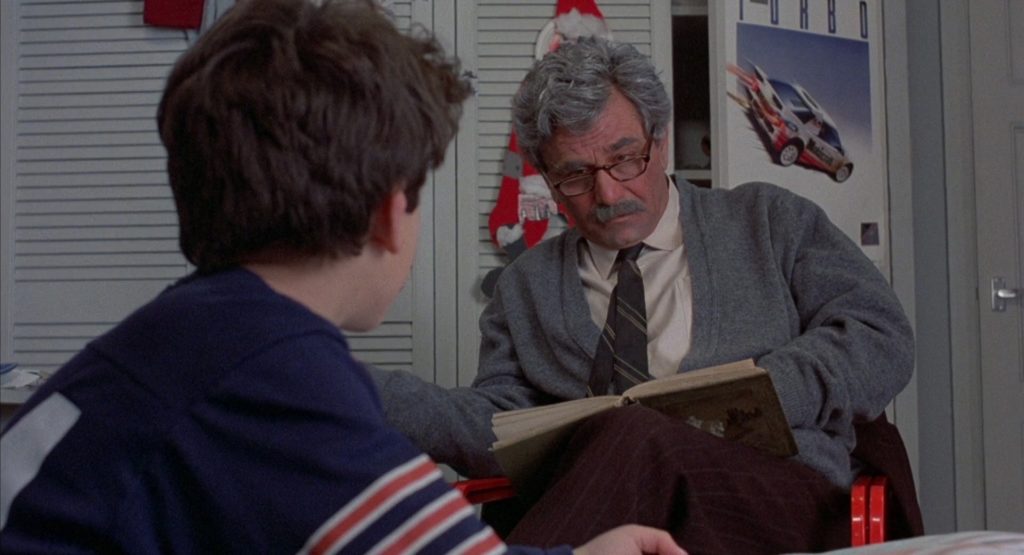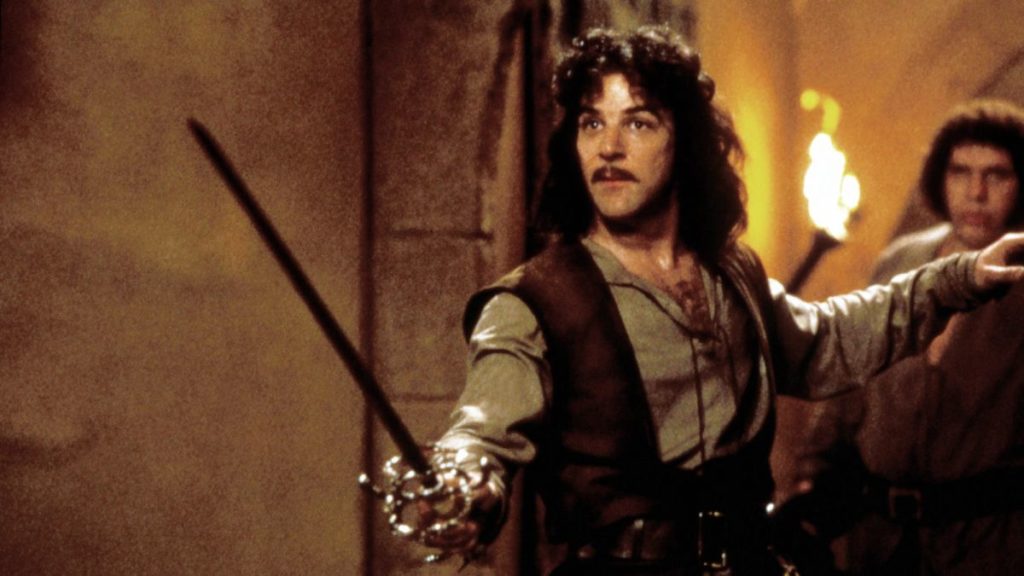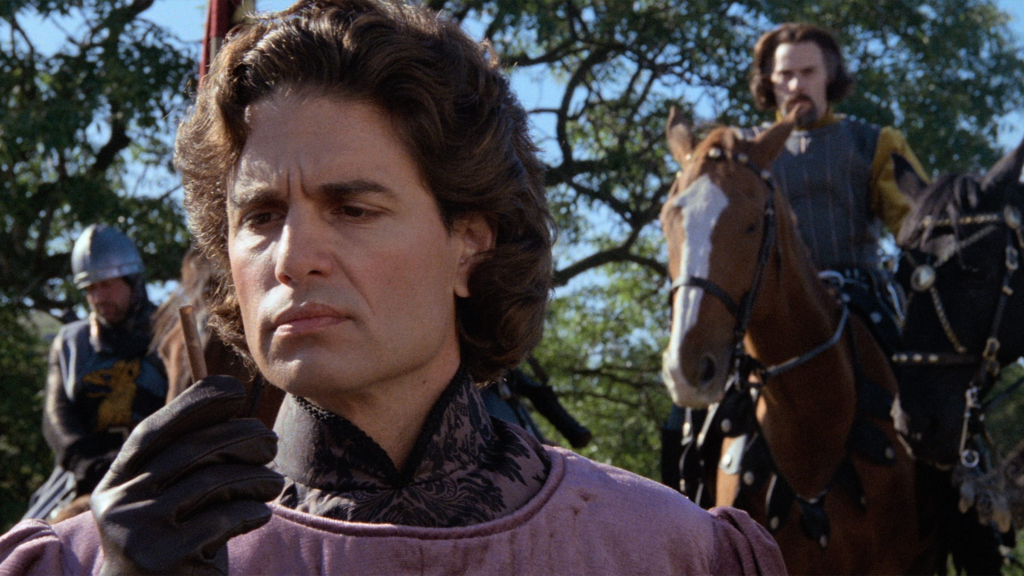| Jake Rudegeair |

The Princess Bride plays at the Trylon Cinema from Friday, April 28 through Sunday, April 30. Visit trylon.org for tickets and more information.
Forget everything you know about The Princess Bride.
It won’t be easy. Rob Reiner’s hilarious classic from 1987 is fused to our collective filmic memory like a sixth finger. It would be like asking you to forget your favorite grade school teacher or your first crush. “As you wish,” “My name is Inigo Montoya,” and “Mawidge” (that’s how Goldman spells it in the book, I checked) are such culturally immutable lines that anyone from your cinephile nerd friend to your most out-of-touch great uncle would know them by heart. So, when I ask you to forget everything you know about this flaming giant of a movie, I realize it’s borderline inconceivable. But let me pinch your cheek for just a minute, and maybe I’ll blow your mind.
Ostensibly, The Princess Bride is a romantic fantasy wrapped in a coming-of-age tale. Fred Savage learns to appreciate overt descriptions of make-out sessions delivered by his wizened old grandpa. “The dweam of wuv” (I checked) is the melodramatic centerpiece of the plot. But listen closely, traveler, and discover another tale lurking beneath the surface.
Fred Savage isn’t sick at all. He’s mourning the death of his dad.
Now, before you go full shrieking-eel on me, let’s check the tape. The very first sound of the film is Fred Savage’s fake-ass coughing. As a former child liar, I’d recognize that phlegm-less hoax of a sound anywhere. It also never happens again for the following 93 minutes. Fade in on Hardball, a classic baseball videogame for the Commodore 64. Is there another sport in American mythology more indicative of the father/son relationship than baseball? Kevin Costner doesn’t think so.
What follows is the play-acting of a concerned mother who’s fully aware of her grief-stricken son’s true reason for staying home with the blinds drawn. When Savage whines, “Can’t you just tell him I’m sick?,” she replies, “You’re sick? That’s why he’s here.” Now, why would she deliver that line like a question? Because “sick” is code for “grieving.” I don’t see any tissues within a hundred miles, and how many kids get to play videogames and eat Cheetos while they’re home sick from school? She’s worried about him. She’s giving him space and hoping that the sacred bond between grandfather and grandson might break the curse of his suffering.

Enter Grandpa with a wrapped present (for what, having a cold?). Peter Faulk delivers a devastating clue: “It’s the book my father used to read to me when I was sick, and I read it to your father, and now I’m going to read it to you.” Seems like a pretty essential piece of that chain is missing! It gets no explanation whatsoever.
Attention is drawn away from our sad boys when Grandpa takes up the book and begins to read. Savage is instantly bored with the lovey-dovey stuff. “When does it get good?,” he asks impatiently. His refusal of the call is the beginning of his journey through the Fire Swamp of Grief, beyond the Pit of Despair, deep into Humperdinck’s castle, out the window of redemption, and back to the healing fields of love.
But I’m getting ahead of myself.
You might be saying, “I don’t buy it. This whole movie is about the romance, you idiot!” To your very rude observation I respond with a question: what two feelings better define adulthood than grief and romantic love? But you’ve also forgotten a key ingredient to this tale, you warthog-faced buffoon. Allow me to toss my proverbial rapier into my dominant right hand.
Inigo Montoya, the most quotable and memorable character of the entire film, is driven by the overwhelming grief of his father’s death. What better vehicle to drive Savage’s excitement than a swashbuckling, pure-hearted, ne’er-do-well whose messy morality and obsessive reiterations make the B-movie plot look a hell of a lot like an A-story. Mandy Patinkin as Inigo wields all the wild woes of a troubled hero. He’s angry and confused, and he needs loving friends to keep his head in the game (shoutout to Fezzik, he of the legendary rhymes and the original ice bucket challenge).
When Inigo shares his tale with the man in black in the first act, Westley responds by asking how old he was when his father was killed. It’s a very deliberate question. “I was 11 years old,” says Inigo. Well, what a coincidence that he was the exact same age as Fred Savage is in this film! Inigo even bears the scars from that fateful day on his cheeks, the same spot Grandpa accosts in the first scene. And of course, when Savage asks if this book has sports, “fencing” is the first thing Grandpa points to. He knows that his mourning grandson will relate to the athlete-warrior on a mission of vengeance.
Let us also consider Buttercup’s harrowing and boo-ful dream sequence. In the dream, the hapless king dies the night of the wedding ceremony. Humperdinck proclaims, “My father’s final words were—” before Savage cuts him off and yanks us out of the scene. Seems like quite a telling line for Savage to interrupt, wouldn’t you say? Given that the king’s death is a secondary detail to the primary thrust of the moment? The poor kid believes the dream is “real” and is offended at the idea that the wedding would go off without a hitch. “I’m telling you, you’re messing up the story. Now get it RIGHT!” Perhaps he was triggered by the mention of yet another lost father. This scene is also where Savage receives that brutal lesson we all learn eventually, when Peter Falk as the grandfather laments: “Who says life is fair, where is that written? Life isn’t always fair.” Tell us about it, Grandpa.

Of course, the Butterstly (Westercup?) love story can’t help but take center stage, for Savage and for us. It’s accessible, flamboyant, and dramatic. We know who to root for and how to feel. We’re laid bare by true love while the secret story-without-the-story-within-the-story does its work on us. The pitched battles and romantic rescues couldn’t make for a more quintessential adventure tale. But it’s how stories heal on the sly that gives The Princess Bride its enduring magic. Savage feels it, and so do we—even now, almost 40 years on.
After Inigo exacts his revenge on Christopher Guest’s sociopathic Six-Fingered Man, he gives us another coded message about grief with his final line, wrapped in a bloody tunic of post-vengeance ennui: “I don’t know what to do with the rest of my life.” Perhaps that’s the most terrifying promise that grief makes—that we’ll have to face a mysterious new existence we don’t recognize if we process our pain. Doing double story duty, Westley offers him a gig as the Dread Pirate Roberts. It’s a second chance at life. And just like that, Savage and Inigo are delivered through misery back to the promise of “adventure” (read: love).
I could fill all the libraries in Guilder with revelations of the secret story within The Princess Bride. But for now, I’ll just share one final, irrefutable clue. The closing sentence of the movie is Grandpa’s delivery of that loaded, indelible phrase, “as you wish.” But there’s one other line that does not mean what you think it means. It comes after Savage’s regard for the final kiss, when he says quietly, “I don’t mind so much.” He no longer resists the pain because he knows that without it, love wouldn’t be such an outrageous adventure.
Do I think Reiner was scheming and planning this subplot all along? OK, probably not (are you happy now, you miserable vomitous mass!?). But the fantasy genre has always been encoded with the universal travails of mundane human life. Miracle men, Cliffs of Insanity, bombastic torture devices, cruel royals, excess fingers, giants on fire, magical chocolate pills, rats of unusual size, brute squads, courageous princesses, sea monsters, supernatural love that defies death—these are all metaphors for the thrills and anxieties of our collective subconscious. But at some point, we all have to be Fred Savage, eating Cheetos and playing Hardball, learning how to carry on with the help of our wise teachers and the solace of a good story.
Edited by Olga Tchepikova-Treon
